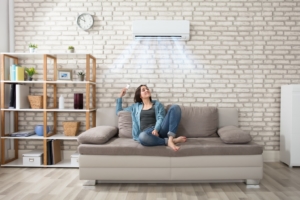Americans are always in need of extra storage space with 65% of people owning a garage and an additional off-site unit.
Improving how you store your stuff can save you space and protect your things from being damaged.
If you are looking for ways to store your personal belongings then you need to be strategic and not just throw things in the basement, attic, and garage.
Read on to find the top 10 tips for storing your stuff.
1. Remove and Organize
Before you start storing your stuff you should go through your possessions. You might be able to toss, donate, or find useful things for your home. This will limit the number of items that go into storage.
Once you have decided which items will be packed put similar things together. Make categories like books, clothes, and sports equipment.
2. Take it Off the Floor
The best way to store your stuff is off the floor. You will have more space to walk and utilize areas like the garage and basement for a car or socializing.
Taking your boxes off the floor also keeps them safe from pests and water damage. If you have a flood, your boxes will stay dry.
Install racks, overhead tracks, or hooks to secure your items in the air, but that also are easy to take access.
3. Label Boxes and Bins
When considering tips for storing your things remember to label your boxes and bins. This is especially convenient if you aren’t using long-term storage. You want to be able to find items without opening all several boxes.
Keep the labels on the outside and facing the front to allow them to be seen. Also, use a permanent marker and durable tape to ensure the text doesn’t disappear.
4. Rent a Storage Unit
If you have a small home or have run out of space then consider these storage options for off-site storing.
Storage units come in various sizes so choose one that best fits your needs. You will pay a small monthly fee to keep the unit, so you don’t want more space than you need.
Many units come with air conditioning to keep your items safe from extreme heat. Security features like cameras and key access protect your possessions.
5. Think About the Climate
Your home might not be as secure as a storage unit if you place your items in a room that doesn’t have climate control. Your garage can get hot and cold while your basement can accumulate too much moisture.
Add an AC unit or dehumidifier to protect your items from the elements. You also want to protect your things from bugs and rodents. Moths can eat clothes and roaches like cardboard. Use plastic covers on your things to keep them safe.
6. Clean Before Packing
Cleaning the storage area is the best way to store your things to limit dust collection.
Remove all your items from the room. Then sweep and mop the floor. Use a damp rag or sponge to wipe the walls and corners to remove spider webs. Clean the windows with glass cleaner to naturally light the area.
7. Secure Fragile Items
Using bubble wrap for fragile items is the best way to keep your stuff safe when moving. Boxes can shift or fall in your car or moving truck.
When in storage, your breakable things will be protected if a box falls when trying to access your possessions. Label these boxes and don’t place them under heavy objects. Use hard plastic or metal boxes that can’t be crushed under pressure.
Large sensitive items like paintings and electronics such as flat-screen TVs should be wrapped in blankets or soft foam then covered in plastic bubble wrap.
8. Break Down to Pieces
To save even more space, break down large objects into pieces when possible. Lampshades can be removed, bed frames can be taken apart, and couch cushions can be separated and packaged in bins or bags.
Larger items might not fit in standard boxes, so you can use rope or bungee cords to keep them secure. You can place them in plastic bags to keep them dry and dust-free.
9. Make them Accessible
Think about how you will reach your boxes and bins. Use sliding shelving units and racks that can be pulled out to reach items from back to front.
Keep a ladder or step stool handy to reach items that are too high to grab.
Always allow enough space to walk and not trip over your stuff. Don’t keep items loose. They should be in a box, bag, or tied to something securely.
Avoid stacking heavy boxes on top. Instead, put the lighter ones near the top so that you can move them with ease. Heavy boxes should be on the ground or the back of shelves.
10. Make an Inventory
Forgetting what you packed and where it is packed makes storage units useless and difficult. You will have to unpack boxes just to find the object you are looking for.
Make your storage unit efficient by creating an inventory and map guide. List each item, the number of items, which box it is in, and where the box is located.
You can add a letter and number to the box to create your own archive system. Boxes labeled A include books and are numbered 1 to 3. Write on your inventory list A3, A2, A1 and which books are included in each box.
Finding More Space to Store Your Stuff
No matter how well you organize your things, you may need more space to store your stuff. This might mean that you need to add a garage, finish the basement, create an attic or even buy a larger house as your family grows.
If you are considering a new home or adding an extension then consult our real estate section to create the perfect size house for you.




